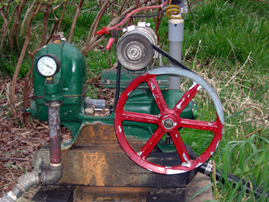When do I use a pressure switch with the pulsation plug feature?
Form “P” switches are most commonly used on systems that utilize piston pumps (a.k.a. reciprocating pumps). The pulsation plug enables the pressure switch to operate on these types of pumps without responding to the pressure spikes at the end of each piston stroke.

The function of a pulsation plug in a pressure switch is to dramatically slow the flow of fluid (water) in and out of the diaphragm chamber to reduce the surges and rate of pressure change. The switch with a plug installed senses pressure changes over significantly longer intervals and does not respond to sudden spikes in pressure. Without the plug, the spike in pressure would cause the contacts to open, shutting off the power to the pump only to be turned right back on as the piston is on the back stroke. The system would not be able to operate this way.
